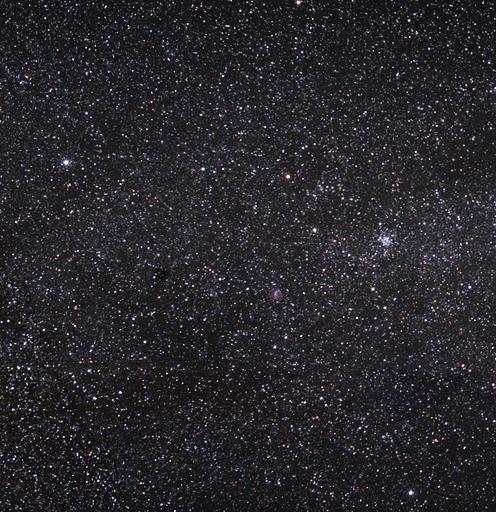MAKE A MEME
View Large Image

| View Original: | Messier_35_–_A_Cluster_of_Stars.jpg (1378x1422) | |||
| Download: | Original | Medium | Small | Thumb |
| Courtesy of: | www.flickr.com | More Like This | ||
| Keywords: messier 35 messier35 texture abstract Messier 35 is an open cluster of stars in the constellation of Gemini (the Twins), located some 2700 light-years away from Earth. Dominated by young hot blue stars, this weakly bound cluster is scattered over a 24 light-year-wide region, and appears as about the same size as the full Moon in the night sky. Recent observations of Messier 35 have revealed many more stars than previously recognised. Astronomers have counted around 500 massive stars, with 120 members brighter than magnitude 13. Massive stars live for shorter periods than their less massive brethren, so many of these stars will perish within a few tens of millions of years. The cluster is estimated to be around 150 million years old. The credit for discovering this massive cluster in 1745 goes to the Swiss astronomer Philippe Loys de Chéseaux, although it was the French comet hunter Charles Messier who definitively catalogued it in 1764 as object number 35, a designation that remains in use today. Just next to Messier 35 is another cluster, much denser and more compact, NGC 2158. Because of its general appearance, and because it contains much older stars, it was once categorised as a possible globular cluster, but it is now well established as an open cluster. Messier 35 is an open cluster of stars in the constellation of Gemini (the Twins), located some 2700 light-years away from Earth. Dominated by young hot blue stars, this weakly bound cluster is scattered over a 24 light-year-wide region, and appears as about the same size as the full Moon in the night sky. Recent observations of Messier 35 have revealed many more stars than previously recognised. Astronomers have counted around 500 massive stars, with 120 members brighter than magnitude 13. Massive stars live for shorter periods than their less massive brethren, so many of these stars will perish within a few tens of millions of years. The cluster is estimated to be around 150 million years old. The credit for discovering this massive cluster in 1745 goes to the Swiss astronomer Philippe Loys de Chéseaux, although it was the French comet hunter Charles Messier who definitively catalogued it in 1764 as object number 35, a designation that remains in use today. Just next to Messier 35 is another cluster, much denser and more compact, NGC 2158. Because of its general appearance, and because it contains much older stars, it was once categorised as a possible globular cluster, but it is now well established as an open cluster. | ||||